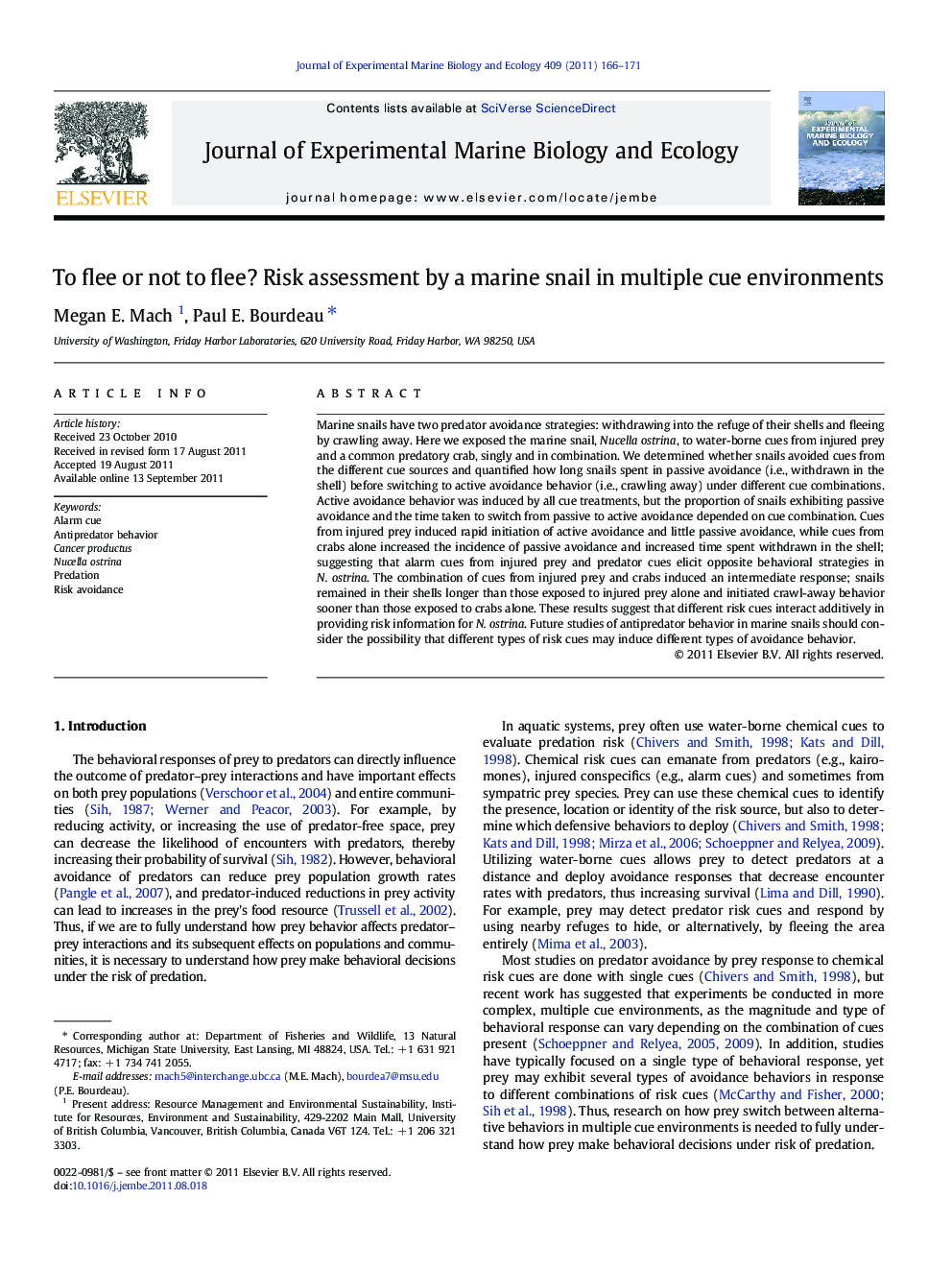| کد مقاله | کد نشریه | سال انتشار | مقاله انگلیسی | نسخه تمام متن |
|---|---|---|---|---|
| 4396186 | 1618455 | 2011 | 6 صفحه PDF | دانلود رایگان |

Marine snails have two predator avoidance strategies: withdrawing into the refuge of their shells and fleeing by crawling away. Here we exposed the marine snail, Nucella ostrina, to water-borne cues from injured prey and a common predatory crab, singly and in combination. We determined whether snails avoided cues from the different cue sources and quantified how long snails spent in passive avoidance (i.e., withdrawn in the shell) before switching to active avoidance behavior (i.e., crawling away) under different cue combinations. Active avoidance behavior was induced by all cue treatments, but the proportion of snails exhibiting passive avoidance and the time taken to switch from passive to active avoidance depended on cue combination. Cues from injured prey induced rapid initiation of active avoidance and little passive avoidance, while cues from crabs alone increased the incidence of passive avoidance and increased time spent withdrawn in the shell; suggesting that alarm cues from injured prey and predator cues elicit opposite behavioral strategies in N. ostrina. The combination of cues from injured prey and crabs induced an intermediate response; snails remained in their shells longer than those exposed to injured prey alone and initiated crawl-away behavior sooner than those exposed to crabs alone. These results suggest that different risk cues interact additively in providing risk information for N. ostrina. Future studies of antipredator behavior in marine snails should consider the possibility that different types of risk cues may induce different types of avoidance behavior.
► Snails exhibit different avoidance behaviors in response to different risk cues.
► Isolated crab cues increase the time snails remain withdrawn in their shells.
► Snails crawl away faster from alarm cues from injured prey than isolated crab cues.
► Snails exhibit intermediate responses to combined crab and injured prey cues.
► Time to switch from shell withdrawal to crawl away depends on cue combination.
Journal: Journal of Experimental Marine Biology and Ecology - Volume 409, Issues 1–2, 1 December 2011, Pages 166–171